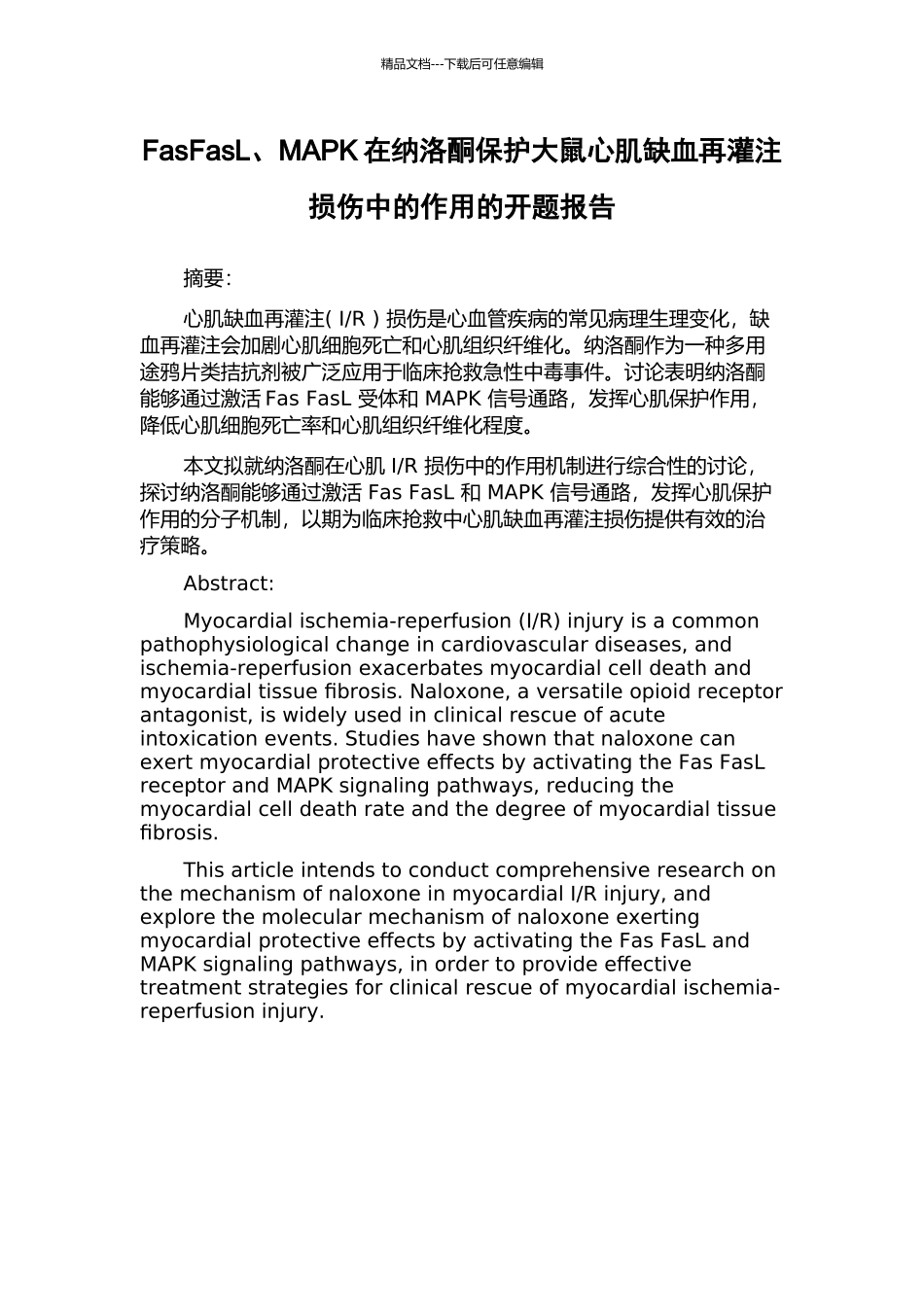精品文档---下载后可任意编辑FasFasL、MAPK 在纳洛酮保护大鼠心肌缺血再灌注损伤中的作用的开题报告摘要:心肌缺血再灌注( I/R ) 损伤是心血管疾病的常见病理生理变化,缺血再灌注会加剧心肌细胞死亡和心肌组织纤维化。纳洛酮作为一种多用途鸦片类拮抗剂被广泛应用于临床抢救急性中毒事件。讨论表明纳洛酮能够通过激活 Fas FasL 受体和 MAPK 信号通路,发挥心肌保护作用,降低心肌细胞死亡率和心肌组织纤维化程度。本文拟就纳洛酮在心肌 I/R 损伤中的作用机制进行综合性的讨论,探讨纳洛酮能够通过激活 Fas FasL 和 MAPK 信号通路,发挥心肌保护作用的分子机制,以期为临床抢救中心肌缺血再灌注损伤提供有效的治疗策略。Abstract:Myocardial ischemia-reperfusion (I/R) injury is a common pathophysiological change in cardiovascular diseases, and ischemia-reperfusion exacerbates myocardial cell death and myocardial tissue fibrosis. Naloxone, a versatile opioid receptor antagonist, is widely used in clinical rescue of acute intoxication events. Studies have shown that naloxone can exert myocardial protective effects by activating the Fas FasL receptor and MAPK signaling pathways, reducing the myocardial cell death rate and the degree of myocardial tissue fibrosis.This article intends to conduct comprehensive research on the mechanism of naloxone in myocardial I/R injury, and explore the molecular mechanism of naloxone exerting myocardial protective effects by activating the Fas FasL and MAPK signaling pathways, in order to provide effective treatment strategies for clinical rescue of myocardial ischemia-reperfusion injury.
